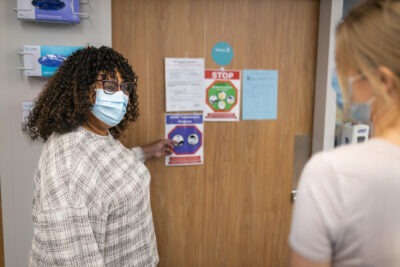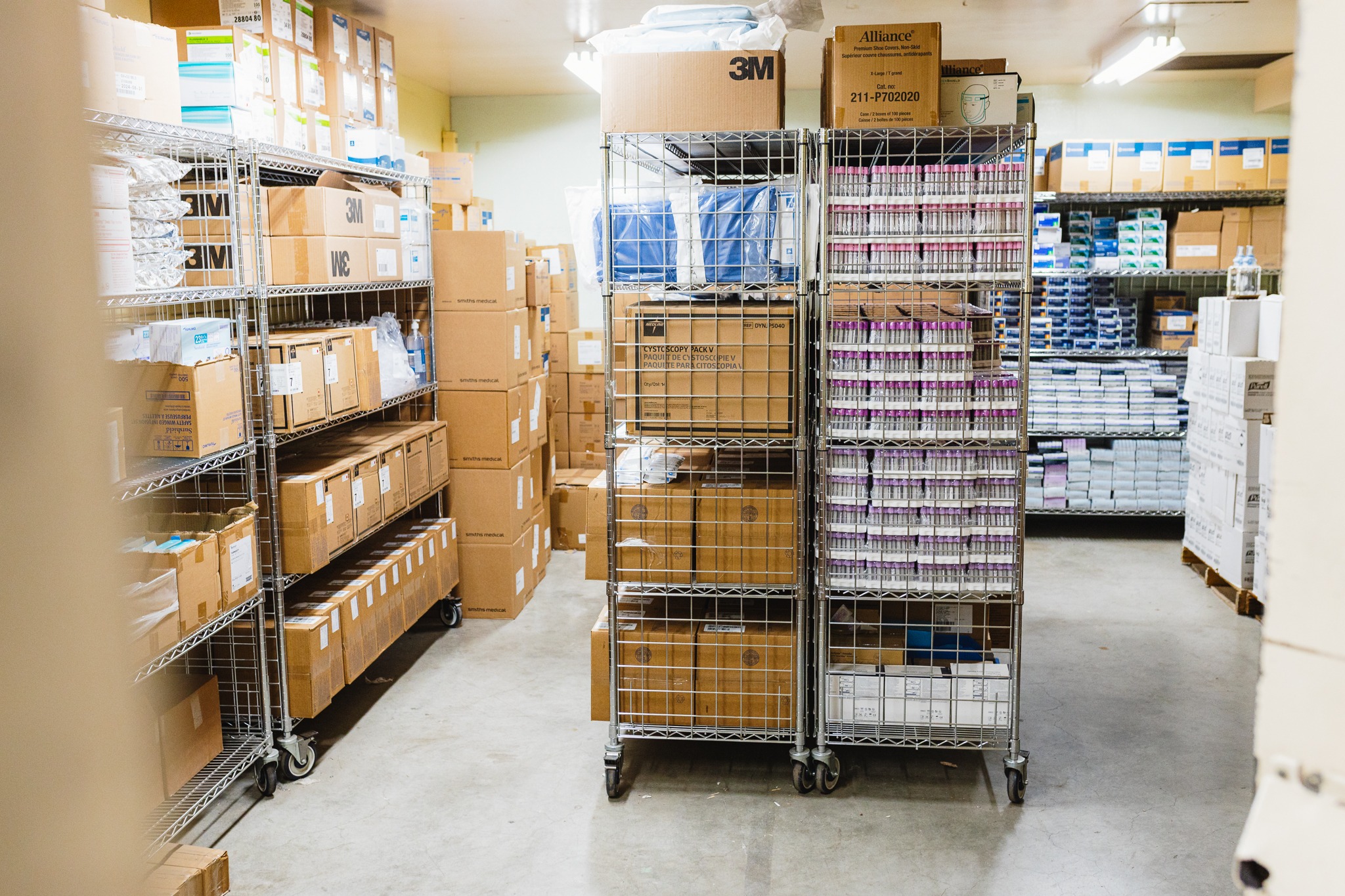
Introducing an HHS infection control practitioner
Connie Gittens Webber had a gift for sciences back in her school days. But it was fashion sense, rather than chemistry experiments, that pointed her in the direction of a microbiology career.
“When I was young, before I was thinking seriously about careers, my mother said that I should work in a laboratory because she thought I would look good in a lab coat,” says Gittens Webber, laughing about how her mom’s comment caused her to check out post-secondary medical lab technology programs. “Back when my mother suggested this, I knew nothing about what lab work involved.”
Gittens Webber went on to study medical laboratory technology, then worked at a Hamilton Health Sciences (HHS) microbiology lab before changing roles to infection prevention and control.
“Every day is different, and we always have to be prepared for the unpredictable.” — Connie Gittens Webber, HHS infection control practitioner
“My background in a microbiology lab was a good fit for this work,” says Gittens Webber, an HHS infection control practitioner for 16 years. She’s sharing more about her role to promote National Infection Prevention and Control (IPAC) Week from Oct. 16 to 20, in recognition of the important role infection prevention and control teams play in keeping health-care settings safe.
Keeping HHS safe
Hamilton Health Sciences’ infection control team works with a wide range of hospital teams to develop and implement procedures and policies for preventing and controlling the spread of infection.
Team members work with HHS microbiologists, infection control disease physicians, clinical and support service programs, patients and families, as well as community partners including the regional infection control committee and public health.
Infection control practitioners follow national and provincial guidelines and best practices for monitoring health-care associated infections and reporting communicable infectious diseases.
Their work includes reviewing and interpreting lab reports daily for any trends in communicable diseases, and gathering infection control statistics such as averages, percentages and rates. They review patient records to determine signs and symptoms of infectious diseases and follow guidelines for containing and preventing spread. They also investigate all infection clusters and outbreaks, in order to get them under control and prevent reoccurrences.
Every day is different
“Every day is different, and we always have to be prepared for the unpredictable,” says Gittens Webber, who is based at HHS McMaster University Medical Centre, where HHS McMaster Children’s Hospital is located.

Signage on a patient’s door to alert anyone entering the room to take necessary precautions.
Her mornings start with checking microbiology results for viruses and antibiotic-resistant organisms at the site. For example, if a patient is admitted with COVID-19 or a contagious germ like C. diff, precautions are taken to prevent spread. This includes signage on the patient’s door to alert anyone entering the room to take the necessary precautions.
“With signage, anyone going into that room knows what protective equipment they should be wearing,” says Gittens Webber.
A major consideration when placing signs on doors is the impact on patients, since depending on their illness they may not be permitted to leave their room.
“We don’t like to use the word ‘isolation’ because these patients may feel singled out,” says Gittens Webber. “We prefer to talk about ‘additional precautions,’ and we try our very best to be compassionate.”
Infection control practitioners also get called to incidents that, on the surface, seem completely unrelated to their line of work, such as a flood. “
We’re included because, for example, remedial actions may be needed to prevent mold from growing,” says Gittens Webber. “Or we could be needed to ensure dust is managed during repair work.”
Educating fellow health-care staff is another part of their role. “We do a lot of education, including at orientation sessions for new staff, such as hand hygiene procedures. We’re always a resource for teams across HHS to find information.”
Rosanne Zimmerman, the director responsible for the Infection Prevention and Control (IPAC) team, added, “I’m incredibly proud of our IPAC team and am so thankful for their leadership, professionalism and dedication. Their guidance and support is so appreciated every day.”



